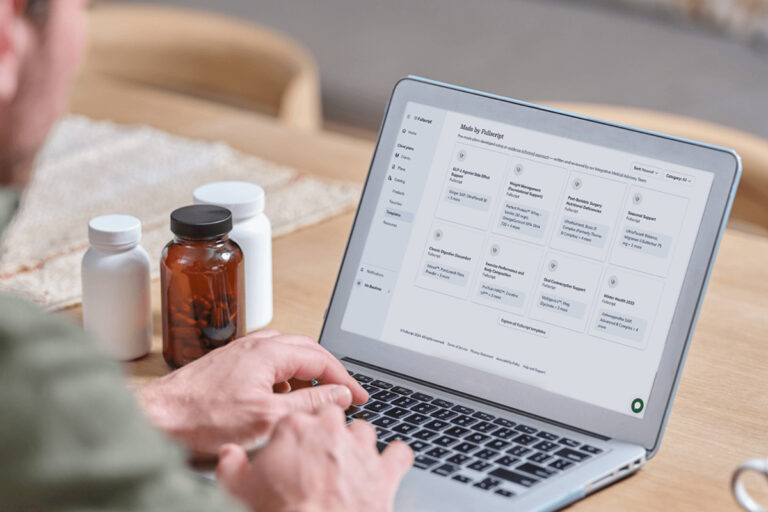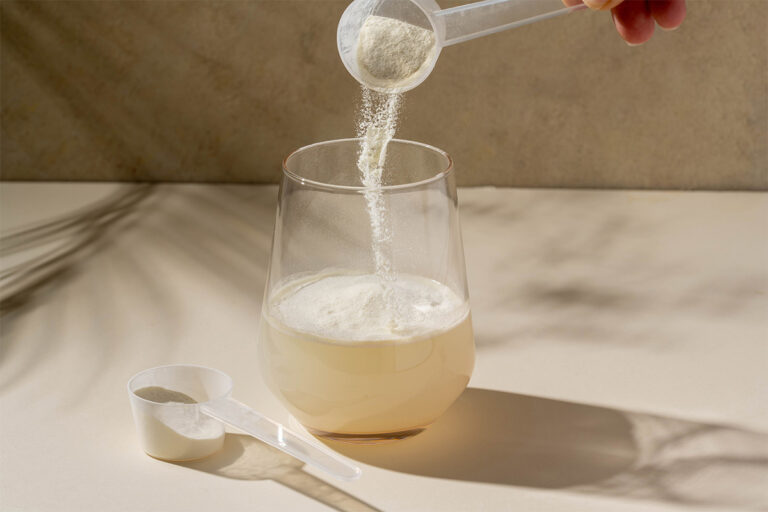What causes sore muscles?
The exact cause of delayed onset muscle soreness (DOMS) is still unclear. However, studies suggest that microscopic damage to muscle fibers due to excessive strain on the muscle may cause muscle soreness during and/or after physical activity. Damaged muscles trigger an inflammatory response, which increases pressure and sensitivity in the affected area. (9) Acute muscle soreness occurs during exercise, while delayed onset muscle soreness occurs about 12 to 24 hours later, and can last several days. (1)(3) The severity of muscle soreness depends on a variety of factors including fitness level, exercise intensity, duration, and weight of resistance used. Fortunately, as you regularly engage in activity, your muscles will adapt, decreasing the chance of developing soreness. (1) If soreness lasts longer than expected, or is accompanied by sharp or severe pain, you may have an injury. If an injury has occured, rest the area and contact your integrative healthcare practitioner as soon as possible. (12)How to recover sore muscles
DOMS is difficult to avoid altogether, especially when engaging in strength training; however, certain activities and nutrients may help speed up muscle recovery. (5)(13) Keep reading below for three simple tips on how to support muscle recovery. Physically active individuals that regularly perform strenuous activites to improve muscle strength may also consider performance and muscle recovery supplements.1. Eat more muscle-recovery foods
A balanced diet rich in anti-inflammatory foods containing antioxidants, omega-3 fatty acids, and protein is an ideal choice to support muscle recovery. (9)(11) Antioxidants and omega-3 fatty acids have demonstrated anti-inflammatory properties that may reduce post-exercise DOMS. (9) Protein foods contain a variety of amino acids, which help build muscle. Regularly meeting your daily protein needs is important in supporting muscle growth and recovery. (4)(7)
The anti-inflammatory diet includes many antioxidant and omega-3 rich foods that help muscle recovery.
2. Take time to rest
Poor sleep quality or not getting enough sleep can hinder the recovery process and increase inflammation. Having proper sleep hygiene and getting adequate rest can help rejuvenate muscles. (6)(14) Depending on the severity of DOMS, a passive or active recovery may be preferred. Active recovery may include light cardio (e.g., walking, swimming), foam rolling, or stretching, while passive recovery involves abstaining from activity and allowing your body to rest completely. (2)(5) Either way, be sure to take it easy as DOMS may increase the risk of further injury if too much stress is applied to the muscle. (3)
Maintaining a relaxing bedtime routine may help support sleep hygiene. (8)
3. Try cold therapy or a massage
Exposing the body to extremely cold temperatures by taking a cold shower or standing in a cryotherapy chamber may be an effective way to help reduce DOMS. Cold therapy may help reduce inflammation and stress, increasing anti-stress molecules such as beta-endorphins. (10) Similarly, massage is an effective way to improve the symptoms of DOMS. Massaging the area for at least ten minutes within a few hours of physical activity may increase blood flow and reduce swelling. (5)(15) Massage has also been shown to decrease stress and perceived fatigue. Reports state that following a 30-minute massage, beta-endophin levels can rise 16%. (5)The bottom line
Eating certain muscle recovery foods and allowing for proper recovery time can help reduce muscle soreness. Certain recovery methods, such as cryotherapy, may not be ideal for everyone. Consult with your integrative healthcare provider to find out what the best way to recover sore muscles is for you.- American College of Sports Medicine. (2011). Delayed onset muscle soreness. https://www.acsm.org/docs/default-source/files-for-resource-library/delayed-onset-muscle-soreness-(doms).pdf?sfvrsn=8f430e18_2
- Bosak, A. M., Bishop, P., Smith, J., Green, J. M., & Iosia, M. (2005). Comparison of 5km running performance after 24 and 72 hours of passive recovery. Medicine and Science in Sports and Exercise, 37(Supplement).
- Cheung, K., Hume, P. A., & Maxwell, L. (2003). Delayed Onset Muscle Soreness. Sports Medicine , 33(2), 145–164.
- Devries, M. C., & Phillips, S. M. (2015). Supplemental protein in support of muscle mass and health: Advantage whey. Journal of Food Science, 80 Suppl 1, A8–A15.
- Dupuy, O., Douzi, W., Theurot, D., Bosquet, L., & Dugué, B. (2018). An evidence-based approach for choosing post-exercise recovery techniques to reduce markers of muscle damage, soreness, fatigue, and inflammation: A systematic review with meta-analysis. Frontiers in Physiology, 9, 403.
- Hotfiel, T., Mayer, I., Huettel, M., Hoppe, M. W., Engelhardt, M., Lutter, C., Pöttgen, K., … & Grim, C. (2019). Accelerating recovery from exercise-induced muscle injuries in triathletes: Considerations for olympic distance races. Sports (Basel, Switzerland), 7(6).
- Huang, W.-C., Chang, Y.-C., Chen, Y.-M., Hsu, Y.-J., Huang, C.-C., Kan, N.-W., & Chen, S.-S. (2017). Whey protein improves marathon-induced injury and exercise performance in elite track runners. International Journal of Medical Sciences, 14(7), 648–654.
- Irish, L. A., Kline, C. E., Gunn, H. E., Buysse, D. J., & Hall, M. H. (2015). The role of sleep hygiene in promoting public health: A review of empirical evidence. Sleep Medicine Reviews, 22, 23–36.
- Kim, J., & Lee, J. (2014). A review of nutritional intervention on delayed onset muscle soreness. Part I. Journal of Exercise Rehabilitation, 10(6), 349–356.
- Lombardi, G., Ziemann, E., & Banfi, G. (2017). Whole-body cryotherapy in athletes: From therapy to stimulation. An updated review of the literature. Frontiers in Physiology, 8, 258.
- Mielgo-Ayuso, J., & Fernández-Lázaro, D. (2021). Nutrition and muscle recovery. Nutrients, 13(2).
- National Institutes of Health. (2021). Muscle aches. MedlinePlus. https://medlineplus.gov/ency/article/003178.htm
- Rawson, E. S., Miles, M. P., & Larson-Meyer, D. E. (2018). Dietary supplements for health, adaptation, and recovery in athletes. International Journal of Sport Nutrition and Exercise Metabolism, 28(2), 188–199.
- Vitale, K. C., Owens, R., Hopkins, S. R., & Malhotra, A. (2019). Sleep hygiene for optimizing recovery in athletes: Review and recommendations. International Journal of Sports Medicine, 40(8), 535–543.
- Zainuddin, Z., Newton, M., Sacco, P., & Nosaka, K. (2005). Effects of massage on delayed-onset muscle soreness, swelling, and recovery of muscle function. Journal of Athletic Training, 40(3), 174–180.





